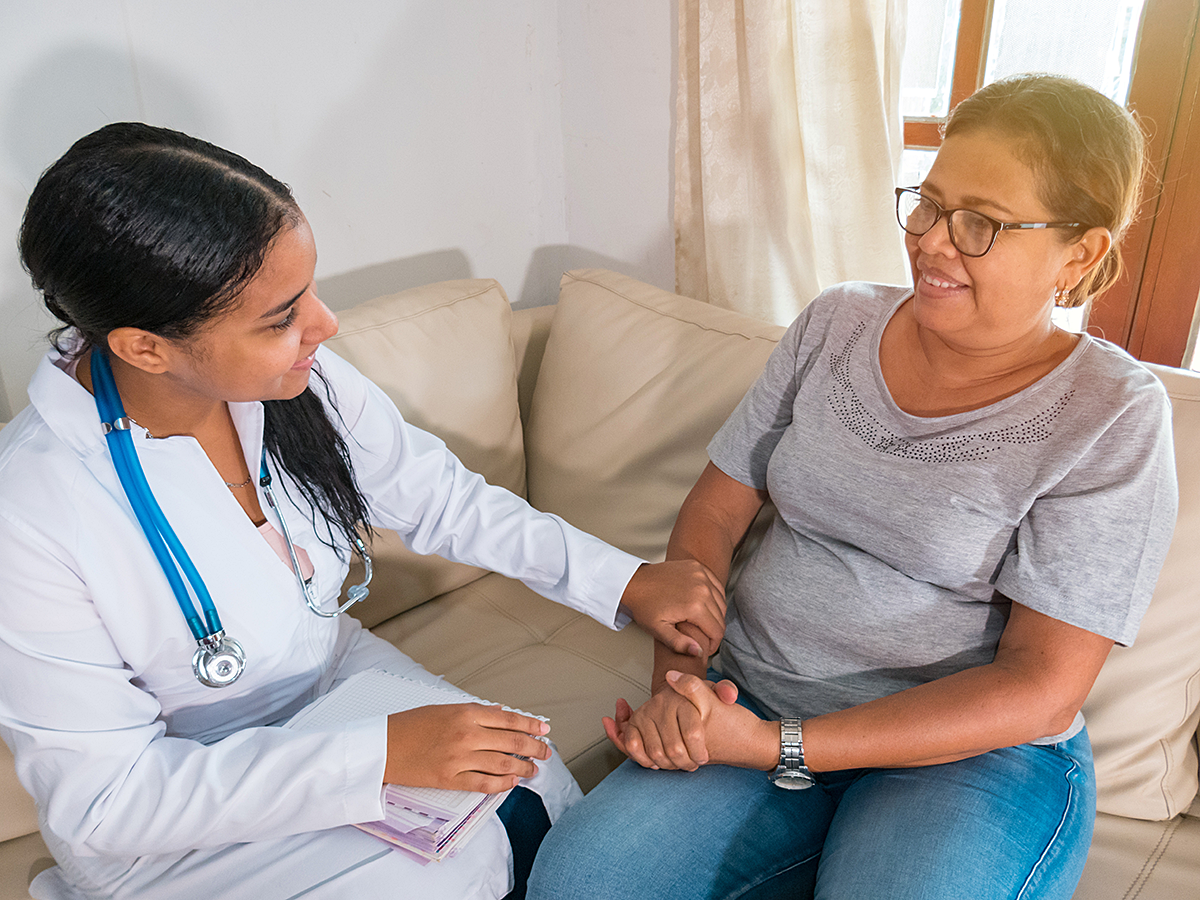Addressing the Stroke Risk of Hispanic Women
April 12, 2023
 Stroke is the third-leading cause of death in Hispanic women in the United States. The good news is that this statistic is largely due to factors that can be avoided or addressed, including high blood pressure, diabetes and obesity.
Stroke is the third-leading cause of death in Hispanic women in the United States. The good news is that this statistic is largely due to factors that can be avoided or addressed, including high blood pressure, diabetes and obesity.
First Things First: Know the Signs of Possible Stroke
A stroke occurs when a blood vessel bringing blood to the brain gets blocked or ruptures so brain cells don’t get the flow of oxygen-rich blood that they need. As time elapses, damage to the brain can be more severe, so BE FAST!
BALANCE – Does the person have a sudden loss of balance or coordination?
EYES – Has the person lost vision in one or both eyes or have they had sudden double vision?
FACE – Ask the person to smile. Does one side of the face droop?
ARMS – Ask the person to raise both arms. Does one arm drift downward?
SPEECH – Ask the person to repeat a simple phrase. Is it slurred or strange?
TIME – Time is critical! If you see any of these signs, call 911 immediately.
Remember, in an emergency call 911 or get to the nearest emergency room.
Know the Risk Factors of Stroke
Other controllable risk factors for stroke include:
- Being overweight or obese (a BMI of 30 or higher is considered obese)
- Diabetes (high blood sugar)
- Heart diseases (coronary artery disease, cardiomyopathy, heart failure, atrial fibrillation)
- High blood cholesterol (hypercholesterolemia) – Maintaining blood pressure of less than 120/80 may help to decrease the risk of possible stroke.
- High blood pressure (hypertension) – A total cholesterol reading of more than 200 is considered high. An LDL reading of more than 70 is considered high.
- Physical inactivity
- Smoking
Lower Your Risk of Stroke with a Healthy Lifestyle
Reducing your risk of stroke means also reducing your risk of diabetes, obesity, high blood pressure, high cholesterol and heart disease. If you smoke, you should stop as soon as you can. As you can see below, staying active and eating right to avoid stroke are not as difficult as you may think.
Physical Activity
Regular exercise can help you maintain a healthy weight to stave off diabetes and heart disease. To help avoid stroke, choose exercise that gets the heart pumping, such as:
- Riding a bicycle (stationary or regular)
- Swimming
- Walking
- Water exercise or walking in a pool
Talk to your doctor about the types of physical activity that are best for you.
Eating Healthy
Like physical activity, a healthy diet can help you avoid obesity, diabetes, heart disease and stroke. Keep these tips in mind:
- Limit your sodium intake for lower blood pressure. Salt is high in sodium; 1 teaspoon provides your daily limit of 2,300 mg. Strive to reduce your daily sodium intake to 1,500 mg.
- Choose fats wisely for lower cholesterol. Avoid saturated and trans fats as much as possible. Bake or grill food instead of frying.
- Eat fresh. Processed foods might be easy when you’re busy, but they can be loaded with unhealthy fats and sodium levels.
Changing what you eat can seem like a chore, but it doesn’t have to be difficult. Once you start making dietary changes, you may decrease cravings for unhealthy guilty pleasures of the past.
Here are some simple ways to change your diet this week:
- Swap in chicken and fish for red meat.
- Cook with olive or canola oil instead of butter.
- Use salt-free seasonings like spices, herbs, lemon and lime.
- Try plant-based proteins like low-sodium nuts and beans.
Complete Stroke Care at Palmdale Regional
Palmdale Regional Medical Center provides stroke care from the time patients arrive at the emergency department to rehabilitation services. The hospital is a Certified Advanced Primary Stroke Center in recognition of our quality stroke intervention care.
When it’s time for stroke recovery, The Rehabilitation Institute at Palmdale Regional provides the only inpatient rehabilitation services within 40 miles of the Antelope Valley. For outpatient physical, occupational and speech therapy, patients can turn to our Rehabilitation and Orthopedic Institute.
SOURCES: Centers for Disease Control and Prevention (CDC); American Stroke Association®
Did you know? The Palmdale Regional website can easily be translated into Spanish by simply clicking the “Español” button at the top of the page.
